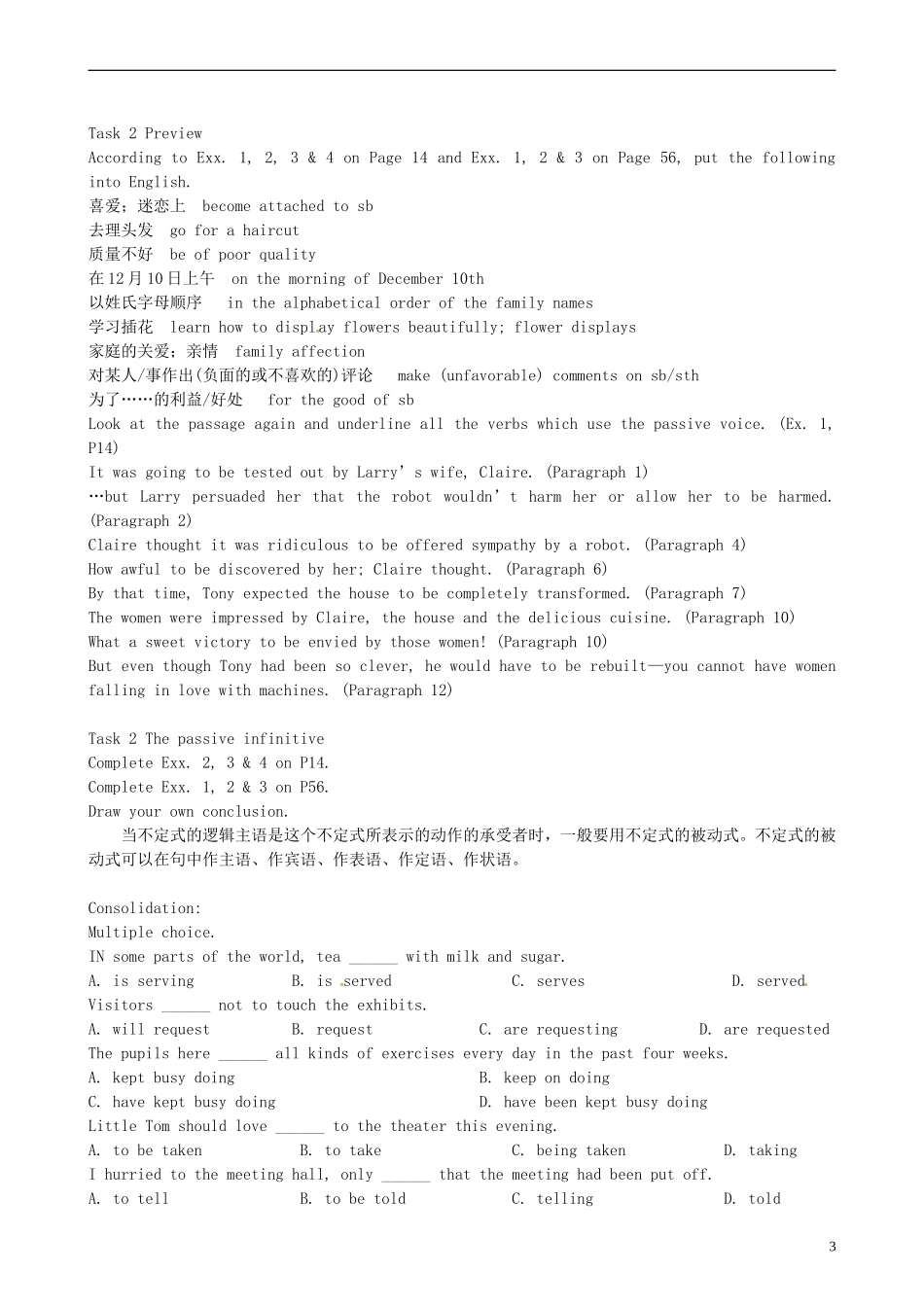NSEC Module 7Unit 2 RobotsRevising Useful StructuresMaterials: Revising useful structures (Page 14); Using structures (Page 56) Content: The infinitive, mainly the passive infinitiveObjectives: Language Aim:Revise: a) the form of the passive. b) when the passive is used. 动词不定式的被动式: a)何时用动词不定式的被动式?b)用动词不定式的主动形式表示被动意义的几种情形。Some useful expressions in this part.Ability aim:Be able to apply the passive to express one’s ideas in daily life.Be able to distinguish the passive, especially in NMET.Be able to apply the passive in English writing.Methods: Group discussion;Cooperation with group members;Autonomous learning;References;Asking teachers。 References: Textbook (PP: 14, 56 and 95); Student Times (Issue 27: B3; Issue 28: B3); Oxford Advanced Learner’s English-Chinese Dictionary;Other references.Procedures:Task 1 Revision英语的语态:英语的语态有主动语态和被动语态。主动语态表示主语发出动作,被动语态表示主语承受动作。I bought the dictionary last week. (主语 I 发出“买(bought)”的动作)The dictionary was bought last week. (主语“the dictionary”承受“买(bought)”的动作, 即“被买”)被动式的形式:被动式的原形: be + 过去分词, 其中 be 有各种时态,由此可知:一般现在时的被动式:is/am/are + 过去分词一般过去时的被动式:was/were + 过去分词现在进行时的被动式:is/am/are + being + 过去分词过去进行时的被动式:was/were + being + 过去分词现在完成时的被动式:has/have been + 过去分词过去完成时的被动式:had been + 过去分词一般将来时的被动式:shall/will be + 过去分词过去将来时的被动式:would/should be + 过去分词含有情态动词的被动式:情态动词 + be + 过去分词(情态动词有:can, could, may, might, must, 1need, will, would, shall, should, ought to, dare; 通常把 used to, have to, be able to, would rather, had better 等也当做情态动词来使用。)还要注意:1) be goin...


